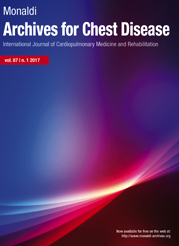Treatment practices of childhood pneumonia: the perspective of caregivers. A community-based study in West Bengal
All claims expressed in this article are solely those of the authors and do not necessarily represent those of their affiliated organizations, or those of the publisher, the editors and the reviewers. Any product that may be evaluated in this article or claim that may be made by its manufacturer is not guaranteed or endorsed by the publisher.
Authors
Pneumonia, an acute lower respiratory infection, is the single largest infectious cause of death in children worldwide. In this study, we aimed to assess the treatment practices of parents/caregivers for the management of pneumonia in children under 5 years of age in a rural community of West Bengal and to determine the associated causal factors. About 200 children were randomly selected by the multi-stage sampling method from two health and wellness centers. Data was collected in Epicollect and analyzed with STATA 17. Logistic regression analysis was used to evaluate the risk factors associated with childhood pneumonia. The mean (± standard deviation) age of the mother was 28±4.63 years, and for the father, it was 34.61±5.59 years. Most of the families belonged to the middle and lower middle class, and in around half of the families, overcrowding was present. Around 71% of children were delivered by a lower section cesarean section (LSCS), 12% of them were preterm, and 24% were of low birth weight. The majority of children were exclusively breastfed and also immunized for their age. About 66 children (33%) had acute illness in the last 3 months, and 132 (66%) in the last 6 months. In this study, 41% (n=82) of children had pneumonia in the last 6 months. All of them availed some sort of treatment, mainly (62.2%) from private practitioners, followed by government health facilities (25.61%). Around 90% of the families adopted home remedies like traditional herbs (42.5%), followed by tepid sponging (36.9%), etc. Around 62.2% of families were very satisfied with the treatment. The caste of family, mode of delivery (LSCS), low birth weight, family history of respiratory disorder, and family history of smoking were found to be significantly associated with childhood pneumonia (p<0.05). Knowledge of parents/caregivers was satisfactory in the present study, and all children received some form of treatment for pneumonia.
Ethics approval
The study was started after obtaining ethical clearance from the Institutional Ethics Committee vide number IEC/AIIMS/Kalyani/Meeting/2023/039–R.How to Cite

This work is licensed under a Creative Commons Attribution-NonCommercial 4.0 International License.






